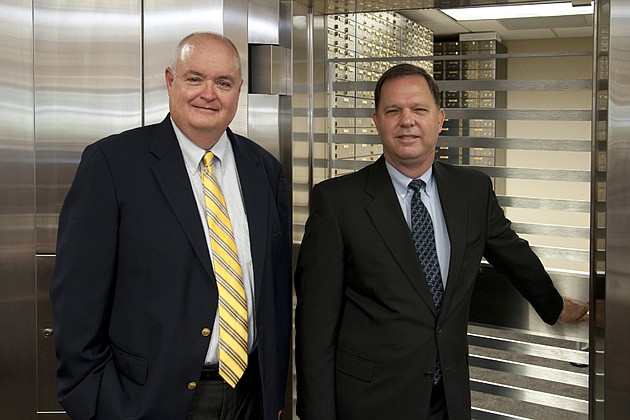- July 26, 2024
-
-
Loading

Loading

Neil McCurry targets ambitious long-term objectives at Sarasota-based Sabal Palm Bank, but his personal day-to-day goal is decidedly more modest.
The daily aspiration: McCurry wants to introduce the bank and its services every day to at least one person who has never heard of it. When that happens, McCurry, who led a $5.6 million capital raise for the bank last year and is now CEO, goes home happy.
“There are no fireworks yet,” says McCurry, who invested $252,000 of his own money in Sabal Palm. “But this isn't about overnight success. It's a slow and steady process.”
Slow and steady, but also, in the case of Sabal Palm, costly — especially in quarterly net income data. The bank went from a profit of $104,000 in the second quarter of 2012 to a loss of $85,000 in 2013, according to Federal Deposit Insurance Corp. data. Sabal Palm had $87.7 million in assets through June 30.
While Sabal Palm posted a drop in quarterly net income, more than half of all 45 Gulf Coast-based banks, 26 lenders, reported net income improvement in the second quarter. Of those 26 banks, seven had net income percentage growth of at least 100%. Finally, all the banks in the region combined for a 33% increase in net income in the second quarter over the same period in 2012. That's bigger than the first quarter this year, when the region's banks posted a 16% increase in net income over the same quarter in 2012 (see table below for a sampling of the best and worst performers for net income).
Leaders in quarterly net income gains, on a percentage basis, include Sanibel Captiva Community Bank, up 3,857.14%, and Naples-based First National Bank of the Gulf Coast, which rose 1,232.51%. Sanibel Captiva Community Bank President and CEO Craig Albert says the rise in profitability can be traced to a concentrated effort to reduce non-performing assets.
At Sanibel Captiva, that meant selling homes it owned that were in foreclosure, so the bank no longer pays taxes, insurance or attorney's fees on the properties. Albert says the rebounding real estate market in Lee and Collier counties has fostered that success. “Now we want to continue to keep our portfolio clean,” says Albert, “and continue to lend money.”
The rebound in the economy and the real estate market was also a big reason behind the quarterly income rise at several other local banks. Clearwater-based USAmeriBank CEO Joe Chillura, for one, says the improved economy boosted his bank, which reported a year-over-year quarterly net income gain of 107.78%.
On the flip side, a big reason behind the net income drop at several local banks, say some executives, is the impact of the Federal Reserve's 2012 securities and bonds-buying binge. McCurry, for instance, says Sabal Palm capitalized on that opportunity last year, but it skews the 2013 data and makes the loss in the most recent quarter more pronounced.
Sabal Palm also invested heavily in marketing in the second quarter, another costly expense that dented profitability. Whatever the reason for the decrease, from a strategy standpoint McCurry says he looks more long-term on net income. “We need to get the bank to where its core operations are profitable,” he says, “not profitable from a one-time gain.”
Other lenders with higher quarterly expenses include Bradenton-based First America Bank, where quarterly income dropped $358,000 year-over-year, and St. Petersburg-based C1 Bank, which posted a $1.59 million year-over-year decrease, a 72.83% drop.
C1 Bank CEO Trevor Burgess says the drop at C1 is directly related to recent expansion efforts, including new branches in the Miami area. The bank's expenses include technology upgrades, new hires and marketing. “We are building an infrastructure to be a statewide bank,” says Burgess. “And if you want to be successful, you have to put it on the line.
Burgess expects the results in the third and fourth quarter will be better than the second quarter.
First America Bank, a $256.3 million-asset institution with five branches spread through Sarasota and Manatee counties, recently opened a loan production office in Lee County. The bank also recently redid its website and invested significantly in back office technology and new products, such as check capture, says First America President Allen Langford.
“These are things we put off the last few years as we penny-pinched to survive the recession,” Langford says. “Now we are looking to grow.”

